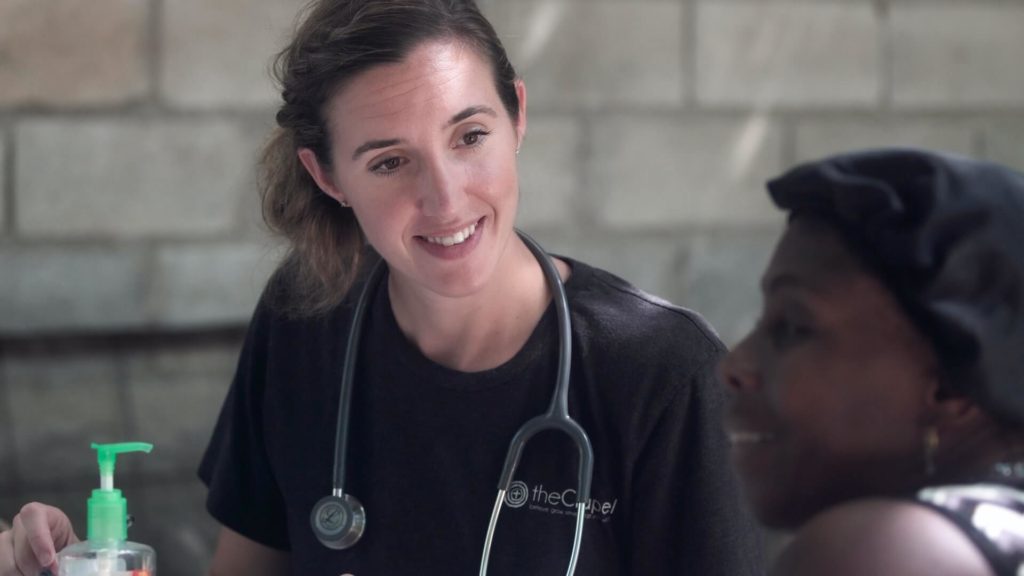
The pharmaceutical industry has sometimes been reticent to engage openly with stakeholders online.
In a recent survey of EU Affairs Directors and EU Communications Directors, one of the key concerns was that social media “may be construed as communication to patients, which creates regulatory compliance issues”.
An article byPharmafile agreed, saying that “pharma has been arriving slower to the table than most other industries given the strict regulations it must adhere to around the world – especially in Europe – which bars pharma talking to patients about prescription medicines.”
Within this context, how can pharmaceutical companies use social media effectively for their EU communications? What are some of the keys to success?
I met with Camille de Rede, Communications Manager at EFPIA (European Federation of Pharmaceutical Industries and Associations) to find out.
Q. EFPIA is active on numerous social media channels — what are your objectives for these channels and how do you measure success?
Social media, particularly Twitter, is becoming an essential part of everyday communication in Brussels.
On Twitter people share intelligence, debates are formed, and even policy has been changed. Moreover, during the elections this year, Twitter proved to be a particularly important communications tool that allowed for the identification and engagement with existing and new politicians and policy makers. Simply put, Twitter provides a quick way of getting a message across – and the 140 character discipline hones the skills at smart communications.
Here at EFPIA, we recognise the value of being on Twitter, as a means to start and follow conversations on different issues. Obviously, the more people following you, the wider the audience – and the greater the opportunity for dynamic engagement and productive conversations. Through Twitter, we have had the opportunity to actively engage – in live time – in conversation with persons participating in our events, as we did earlier this year via#EFPIALIVE. We have used the platform to share blogs, press releases, statements, stats, infographics, facts, interesting articles, and the occasional completely silly inane fact – just for fun.
Finally, we have used Twitter not always actively, but sometimes just sat back and “listened” to the Twitter chatter, receiving valuable insights from researchers, patient groups, and the general public, among others. End result? We learned a lot, engaged more actively, and had the opportunity for more open conversation with healthcare stakeholders and the public at large.
There is so much misunderstanding about the pharmaceutical industry. This is why digital communications is now an absolute must for our industry to strengthen the trust in what we do.
Pharmaviews.eu is our social media blog that is set to strengthen our digital public affairs impact. You will see the blog is segmented into key priority topic areas for our business (Better Health Outcomes, Trade and IP, Sustainable Financing, Science Policy, Vaccines, etc.). We aim to have 2/3 blog postings running each week on key topics and this is going to be an important asset for EFPIA and the voice of the pharma industry moving forward.
Success is measured in the way that we achieve more transparency on pharma key issues at an EU level. We do have the usual quantitative online tools (Klout, Kred, etc.) that track our social media platforms, and we do get good results. In the space of two years for example, our Twitter account has grown from 1,500 followers to close to 8,000. Our website gets around 25,000 visits monthly. So we must be doing something right and we hope to continue in that direction.
There is so much misunderstanding about the pharmaceutical industry. This is why digital communications is now an absolute must for our industry to strengthen the trust in what we do.
Camille de Rede Tweet
Q. What is the best way to facilitate online engagement and dialogue with EU policy-makers?
Gaining trust and respect in debates is only maintained if you have fresh, relevant material to circulate. And this includes using video, graphics and other devices to keep your point of view interesting – and accessible. Pages and pages of copy just does not cut it these days. People crave digests, fast facts, fast rebuttals and talking points. It is important to feed debates, but the menu must be appetizing.
Keeping up with debates is also important, especially if they are moving fast. Making sure you attend (virtually or live) important milestone events will also ensure you are recognized as a key and trusted contributor and commentator. Gaining a credible voice on topics can take time, and something you need to work on, but continued and constant activity builds respect and your audience.
We are currently running a campaign on health and growth called #HealthyEU which is pushing for the development of an integrated life sciences strategy in Europe. There are complex issues to debate here, but social media provides us with the ability to break them down into easier, targeted deliverables. Essentially, the campaign is looking at safeguarding three interdependent pillars of healthcare policy: getting better health outcomes for citizens; delivering sustainable funding of healthcare; and allowing medical discovery to flourish in Europe. As a total campaign, and as a collection of linked digital bursts of activities, social media is playing a significant role in communicating and advocating our key asks to the EU institutions.
A pretty good example of a success stories is The Net Effect EU – which EFPIA took part in. It is a first of its kind video documentary exploring the rise of digital engagement in the European Union – and the amazing opportunities the European Union’s online petition system and the European Commission’s European Citizens Initiative are creating for EU citizens to make their voices heard. Members of the European Parliament, Global 500 executives, nonprofit leaders, trade associations and citizens and travel to Brussels, Rome, London and Washington, DC explained how the Internet and social media are shaping democracy.
Q. What is your advice to pharma and biotech companies who are starting to use social media for EU Affairs?
In my view, these are a few reasons why pharma should use social media:
- Gain valuable insight into patient populations and learn about their experiences via direct accounts and feedback of real-world experiences;
- Extend important messages, such as risk information, to diverse healthcare stakeholders, including healthcare practitioners;
- Improve relationships with various stakeholders, including doctors (for instance by providing immediate treatment news), patients (i.e. empowering them by ensuring their voices are heard and receiving feedback) and the public at large;
- Access real-world evidence of medicines. This can be applicable in a huge range of areas, including vaccines, global health initiatives, new therapies, and more;
- Share ideas and partner on research and innovation – this is especially important as we are seeing a greater move towards collaborative efforts in research.
The advantages of social media engagement for pharma are clear. Admittedly, challenges remain to making digital activity a success. Human resources are also often seen as a barrier. It’s true that building a strong presence through social media can be quite time consuming, with the need for the information to be up to date, accurate and crystal clear. More and more, we are seeing the recognised need for dedicated digital media experts in big pharma companies.
Despite hurdles like these, the pros of greater social media activity far outweigh the cons. In a time when pharma is expanding its commitment to greater transparency and openness, social media is an ideal platform to further this aim.
Now is not the time to shrink back but to push forward and make use of the new tools technology has to offer us. Pharma needs to not only contribute to conversations but also lead them. We need to explore new and more creative ways of engaging the public. That means actively putting information out and seeking input from all stakeholders in the healthcare field – including patients and the general public, who may have been underrepresented in the past. Social media allows us to lose the middlemen, and get direct opinions from these individuals on neutral platforms where all stakeholders can feel comfortable. This opportunity should not be missed.
Through developing digital public affairs and advocacy capabilities companies can create a valuable tool for making its voice heard in Brussels. In addition to developing relationships, social media also delivers valuable stakeholder intelligence. Importantly, it is a way to connect and empower patients and citizens to important EU healthcare debates.
Social media is clearly a vital tool and does enable one to build stakeholder relationships differently and it should be an integral part of your day-to-day stakeholder outreach.
If you ever doubted the penetration of social media amongst the EU policy maker, check out EP Newshub, a neat portal from the European Parliament that collates activity by members of the European Parliament, in real time.
Social media is clearly a vital tool and does enable one to build stakeholder relationships differently and it should be an integral part of your day-to-day stakeholder outreach.
Camille de Rede Tweet
- Written by: Nicholas Bruneau
- Posted on: November 20, 2014
- Tags: Digital Advocacy, Social Media
